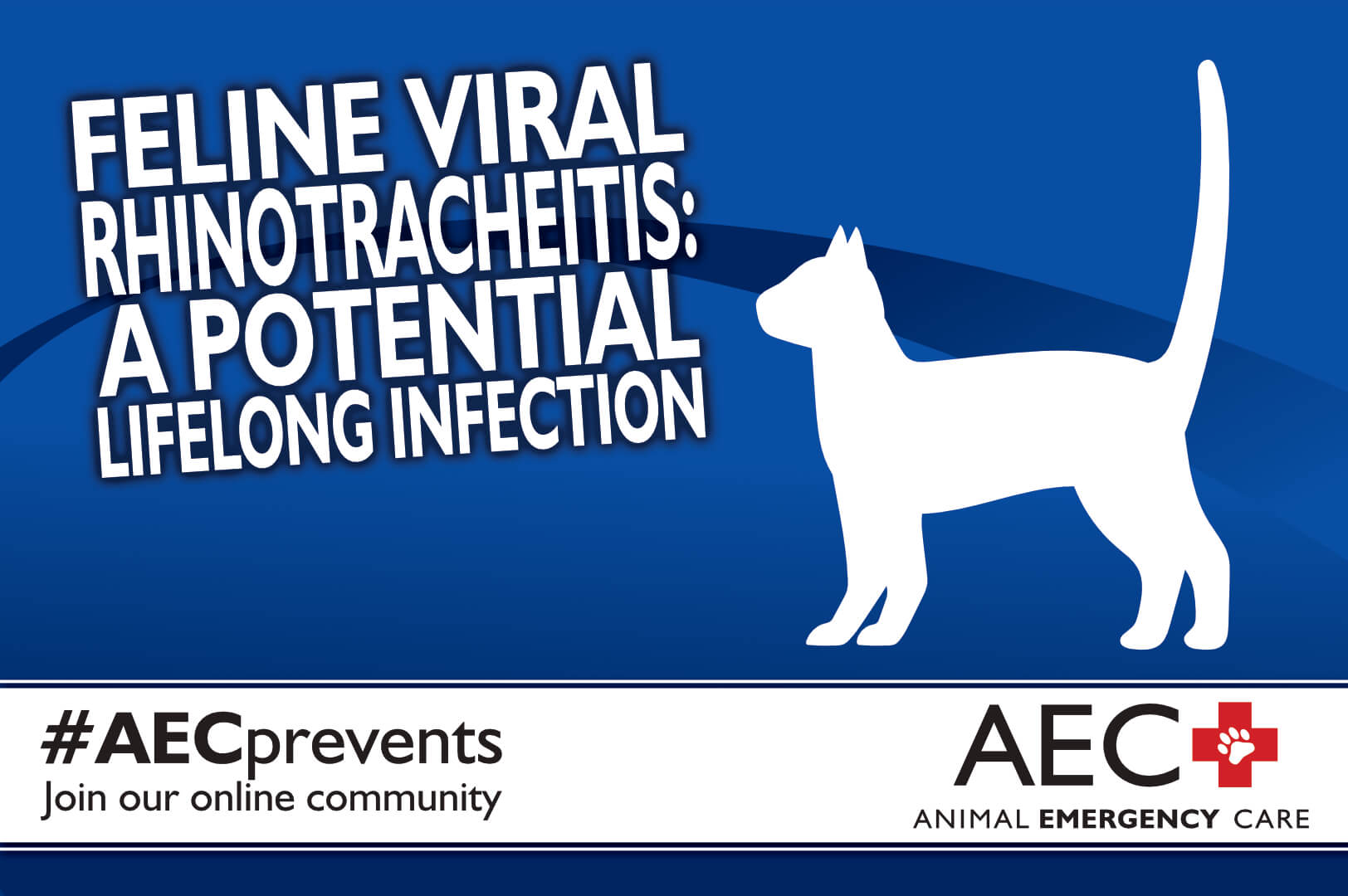Caring for a feline companion is special, filled with furry cuddles, purrs, and afternoon naps in the sun. Cats are independent with unique personalities, and pet owners know that their feline friend will not hesitate to let them know when they want treats or an extra cuddle. Owners can easily become distracted with cuteness overload when they bring home a new kitten or adult cat. However, ensuring your cat receives regular veterinary examinations and vaccinations, especially during the first few months after joining your family, is critical. Kittens are particularly at risk for respiratory infections, including feline viral rhinotracheitis (FVR), because their immune system is still developing. Our Animal Emergency Care team wants to ensure your cat remains healthy through all their life stages, and we describe FVR signs, treatment, and prevention.
What is feline viral rhinotracheitis in cats?
FVR is a highly contagious infectious disease affecting cats, and a major cause of upper respiratory infections (URI). FVR is caused by infection from feline herpes virus type-1 (FHV-1) and does not affect other species. Cats who contract FVR will have a lifelong FHV-1 infection that will likely remain inactive unless the cat is exposed to a stressful event, when the virus may reactivate. Additionally, cats with FVR are at risk for respiratory problems, long-term eye problems, and secondary bacterial infections, which may cause pneumonia in severe cases. The FHV-1 virus spreads to other cats through direct contact with saliva, eye discharge, or nasal discharge of infected cats. Common ways a cat may become infected include:
- Direct contact with an infected cat
- Sharing food bowls, water bowls, or litter trays with an infected cat
- Inhaling an infected cat’s sneeze droplets
- Contact with contaminated environments or objects, including bedding or grooming tools
Feline viral rhinotracheitis signs in cats
FVR signs are similar to other agents, which may cause a URI in cats, and severity will depend on the strength of the infected cat’s immune system. Young cats, kittens, and cats who have other chronic conditions have an increased FVR risk. FVR signs occur between two days and five days following the initial infection, and can persist for one month. Signs may include:
- Uncontrollable, sudden, sneezing attacks
- Nasal congestion
- Excessive eye blinking and squinting
- Clear, yellow, or green nasal and eye discharge
- Redness around and in the eye
- Loss of smell
- Fever
- Lethargy
- Loss of appetite
- Enlarged lymph nodes
Feline viral rhinotracheitis diagnosis and treatment in cats
Your cat needs a veterinary examination if they are showing FVR infection signs, which are similar to other respiratory infections. Ensure you inform your veterinarian if your cat has interacted with a potentially infected kitten or adult cat, because some infected adult cats may not show FVR signs. Diagnosis is based on your cat’s medical history, clinical signs, and potential FVR exposure history. A PCR test to look for FHV-1 DNA in samples from an infected cat’s eye, nose, or throat will provide a definitive diagnosis. Other diagnostic tests may include a complete blood count to check for secondary infections or an associated disease, and a serum biochemistry test to evaluate organ function. Specialized eye tests to check for corneal ulcerations and dry eye may also be recommended.
An FVR infection has no cure and some adult cats with mild signs may recover without treatment. Pets who receive immediate veterinary care have a good prognosis. Kittens or adult cats with severe signs may require hospitalization. Treatments may include:
- Intravenous fluids to prevent dehydration from excess nasal or eye discharge
- Antibiotics to prevent secondary bacterial infections
- Topical eye medications
- Antiviral medications
- Probiotics
- L-lysine supplements for immune system support
- Environmental humidification or nebulization
- Specialized diet
Financial options for your cat’s feline viral rhinotracheitis treatment
Cats who are diagnosed with FVR will require long-term specialized home care with regular checkups, and some pets may also require extended treatment in a veterinary hospital, which can be expensive. Fortunately, many payment options are available, including pet health insurance, to help ease the financial stress. Research the various pet insurance policies and consider purchasing a plan when bringing a feline companion into your family. Most pet insurance providers including Trupanion have policies that include reimbursement for emergency veterinary care and hospitalization. Other payment methods include:
- Care Credit
- Scratch Pay
- Pet health savings accounts
- Short-term bank loans
Feline viral rhinotracheitis prevention in cats
Vaccinating your cat when they are young is the best prevention against an FVR infection. The FVRCP vaccine is a core cat vaccine that provides protection against FHV-1 and other dangerous respiratory agents. Cats who have had previous FHV-1 infection may require more frequent vaccine boosters, to prevent the infection from reactivating. Vaccinated cats can still be infected with FHV-1, but disease severity will be greatly reduced, and some infected cats may never show signs. Additionally, your cat should not be outside, or around other felines or people with cats, until they are fully vaccinated against the virus. Avoid exposing your cat to stressful situations, which can also cause reactivation of an FHV-1 infection. Frequent hand washing and keeping a clean environment will also help prevent infection. FHV-1 will survive in a moist environment, but will die as soon as the infected secretions dry. Diluted bleach is the most effective household cleaner against this virus. Clean an infected cat’s bedding with hot water and detergent.
Ensure your cat is vaccinated by your family veterinarian to prevent a severe URI. However, call Animal Emergency Care if your cat has any FVR signs after hours, and bring them in for immediate care. #AECprevents
Sources:
https://veterinarypartner.vin.com/default.aspx?pid=19239&id=4951824
https://veterinarypartner.vin.com/default.aspx?pid=19239&id=4951489
https://icatcare.org/advice/feline-herpesvirus-fhv-infection/
